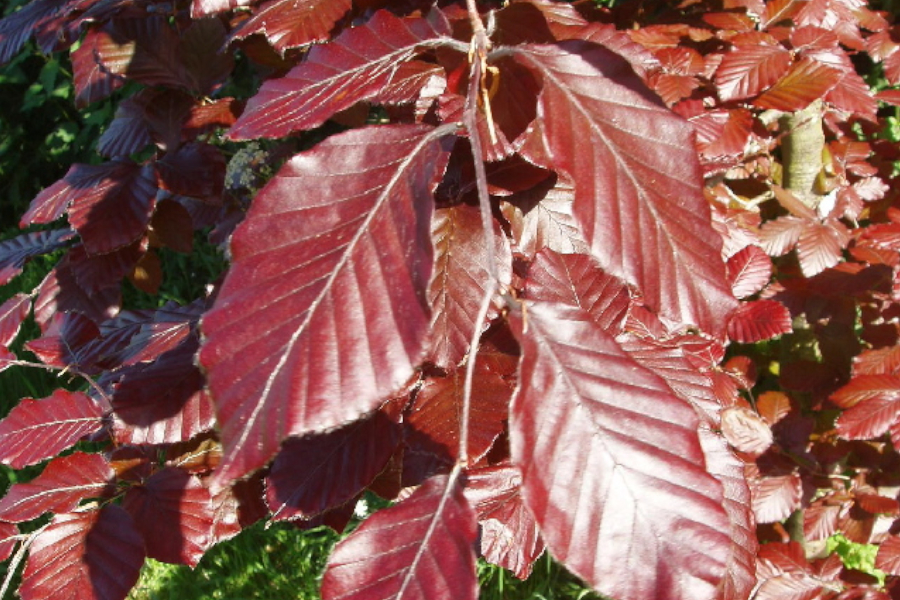Fagus sylvatica purpurea
Even though copper beech is a deciduous tree, it doesn’t drop its leaves the autumn. After turning a distinctive copper color, the leaves remain on branches throughout the winter.
Location
As you wander down the slope on the Elderberry Trail, keep an eye out for our copper beech tree.


History at Hadwen
The beech tree is more broadly documented in 1882 as one of Hadwen’s original tree plantings. In 1900, he is quoted to say “the beech, in its variety, forms a class of ornamental trees worthy of more elaborate consideration than time will permit.” However, it isn’t until 1971 that the first copper beech is specifically archived in arboretum records.
Keep Learning
Detailed Species Information
Copper beech is a deciduous tree in the family Fagaceae and native to much of Europe. This large tree typically grows from 82–115 feet (25–35 meters) in height and 5 feet (1.5 meters) in diameter. The lifespan of the copper birch ranges from 150–200 years, but in some cases can approach 300 years under ideal conditions. The copper beech is characterized by simple, alternate leaves. Unlike many other deciduous trees, its leaves are not dropped in the autumn but remain on branches throughout the winter with a distinctive copper color.
The copper bark can thrive in many soil types but requires good drainage and a relatively humid climate with adequate rainfall. Generally, the copper beech requires lower light conditions to prevent the soil from drying out. It is acclimated to very low light conditions, as beech forests are typically dark. The lumber of copper beech is widely used for carpentry since its fine grain makes it ideal for applying varnishes, dyes, and glues. This species is also a popular ornamental tree and is used for landscaping in Europe and North America. One of the largest copper beeches is located in Brookline, MA, less than 50 miles east of the Hadwen Arboretum.
